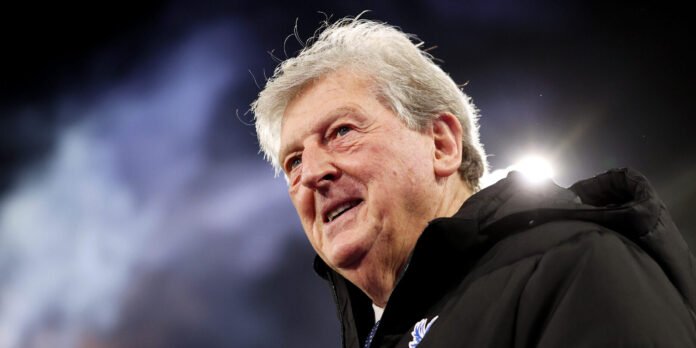This was not how it was supposed to end for Roy Hodgson and Crystal Palace.
When he answered the call to return for another year with his boyhood club last summer, Hodgson had spoken optimistically of finishing in the top half and was enthused by the prospect of working with a squad featuring several talented young players.
The plan was for a stress-free season, devoid of relegation concerns, before Hodgson stepped graciously aside in the summer for a longer-term project manager to take over.
But the reality has been very different, with the season turning into one of friction off the field and struggle on it. Hodgson had been on the verge of losing his job last Thursday when, in scenes that shocked his players and staff, he collapsed towards the end of a training session. It was the second time this season he had suffered a health scare, having missed Palace’s game at Aston Villa in September after being taken ill on the morning of the match.
Suddenly, issues such as relegation battles, fan protests and managerial changes seemed less significant, with supporters united in their goodwill towards a man they had serenaded as “one of their own” for much of his time at the club.
It was respect which had been earned from hauling Palace to mid-table after the club had made the worst start to a season in Premier League history (seven defeats in 2017-18), guided them through the Covid pandemic and then performed another rescue act when replacing Patrick Vieira last year.
It did not, however, change the direction of travel for Palace, who had set their hearts on appointing Oliver Glasner, the Europa League-winning former head coach of Eintracht Frankfurt, as Hodgson’s replacement.
“This club is very special and means so much to me and has played a big part in my footballing life,” said Hodgson in the club statement announcing he had stepped down. “I have fully enjoyed my time here across six seasons, as it has given me the chance to work with top class players and staff doing what I love every day.
“However, I understand, given recent circumstances, it may be prudent at this time for the club to plan ahead, and therefore I have taken the decision to step aside so that the club can bring forward their plans for a new manager, as intended for this summer.”
In truth, Hodgson’s early exit from Palace had been inevitable since a humbling 4-1 defeat by arch-rivals Brighton & Hove Albion on February 3, with The Athletic now able to reveal:
- Members of Palace’s hierarchy were angered by Hodgson bringing on Michael Olise at Brighton with the team trailing 3-0 only for him to break down with another hamstring injury.
- Concerns were mounting that Palace’s training sessions were not sufficiently intense and that was a factor behind the club’s injury record.
- Several senior figures at Palace were exasperated at how long it took to decide to move on from Hodgson, with general partner John Textor having urged for him to be replaced in December.
- A big factor behind Hodgson not being fired sooner was Parish’s concern at the lack of a suitable alternative.
Steve Parish decided to sack Roy Hodgson (Dan Mullan/Getty Images)
The decision to replace Hodgson was not taken easily, particularly with his health concerns. Conversations were never likely to be straightforward given Hodgson is a proud man and has shown no indication that he wants to stop working completely.
Parish, as executive chairman, made clear Hodgson has “a special place in Crystal Palace history and this will never be forgotten”, but he had made the final call and communicated the decision to Hodgson over the weekend. He was under no obligation to consult Textor, Josh Harris and David Blitzer, his fellow general partners, although, as with Vieira’s departure last March, he was aware of their views.
Now Palace will be hoping Glasner can revive their season, with the club in danger of being sucked into a relegation battle after a run of two wins in 13 league games.
Although Parish wavered over whether to fire the man who had kept Palace in the top flight for longer than any manager in their history, events at the Amex Stadium 12 days ago proved insurmountable.
The mutiny among a large section of supporters – some of whom had confrontations with Palace players at the final whistle – and the worst defeat by Brighton since 1956 were bad enough. The home supporters gleefully mocked Hodgson’s predicament, singing “Super Roy Hodgson” and “Roy Hodgson, we want you to stay”. Brighton manager Roberto De Zerbi was equally gleeful, saying his side “had the poison today”.
The 22-year-old had started the game on the bench after being substituted against Sheffield United four days earlier, having complained of tightness in his hamstring. Alarm bells should have been ringing: it was the fourth occasion since June that the French winger had injured the muscle, meaning he had made just eight Premier League starts.
By half-time at the Amex, Palace were 3-0 down with the game effectively over, but, to the bafflement of many in the away contingent, Olise was sent on at the start of the second half.
Just 11 minutes later, he was gesturing to the bench that he needed to come off and scans confirmed another hamstring injury that could rule him out for two months.
Hodgson later said he had been told by his medical staff that Olise could play 45 minutes and that the player himself had told him he felt fit, but the decision to put him on when confronted with a three-goal deficit and his recent fitness history made little sense.
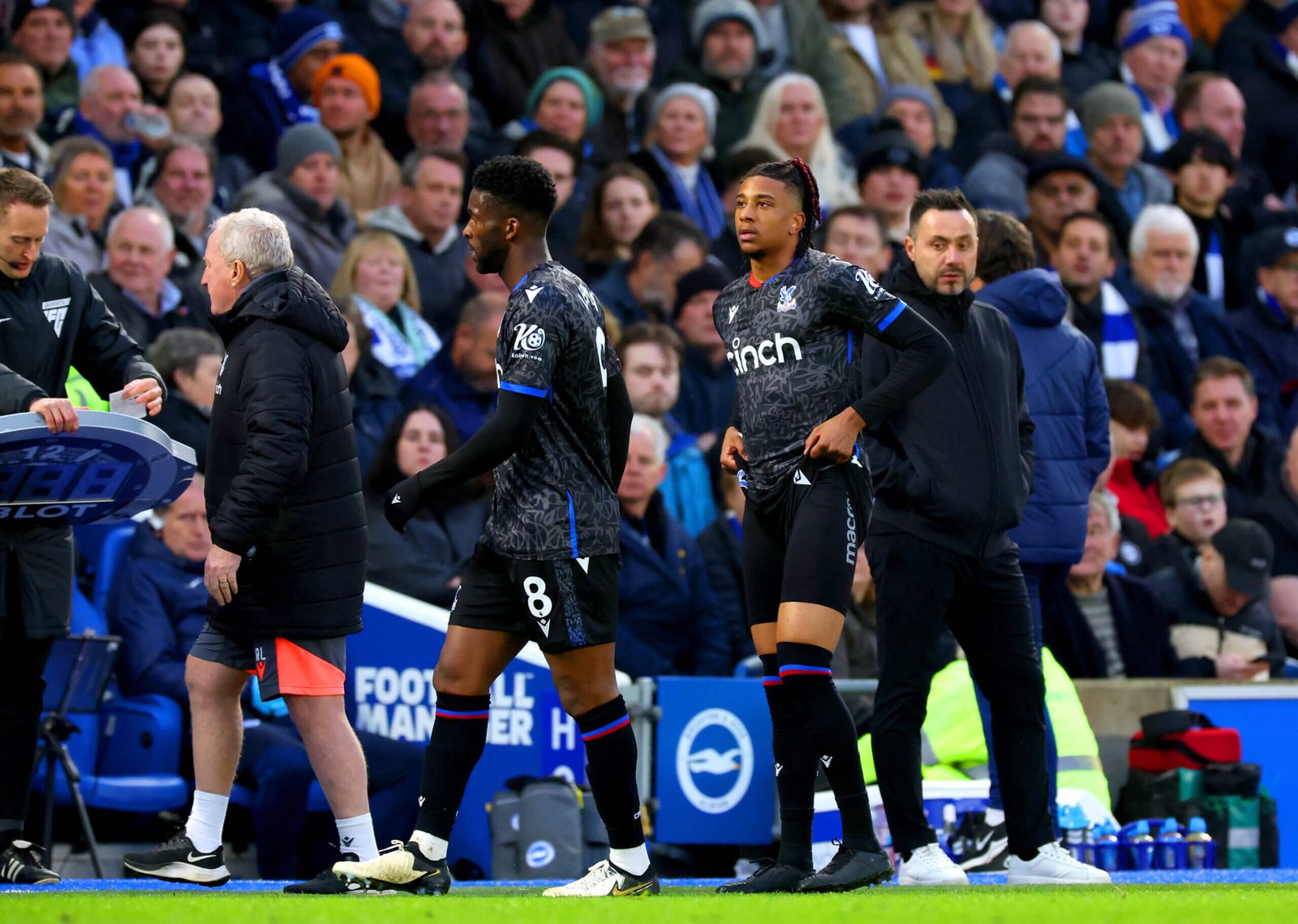
Michael Olise leaves the pitch at Brighton (Steven Paston/PA Images via Getty Images)
Medical staff and senior figures at the club were also unimpressed at Hodgson’s reference to the advice received from his medical team in the post-match press conference.
The manager had done similarly earlier this season in reference to Eberechi Eze and had also spoken of the sports science staff playing an increasingly influential role in team selection and substitutions. There was a sense of Hodgson trying to evade responsibility.
Olise was just the latest high-profile example of Palace’s injury-ravaged season. Eze has missed large parts of the campaign due to ankle and muscle problems; Cheick Doucoure, last year’s player of the season, tore his Achilles at Luton in November and will not play again this term; while Dean Henderson, Jefferson Lerma, Odsonne Edouard, Joel Ward, Jesurun Rak-Sakyi and, most recently, Marc Guehi have all had spells out.
The situation risked descending into farce before a game against Nottingham Forest when Hodgson attend his pre-match press conference with all his absentees, many of them nursing hamstring problems, written on a piece of paper to ensure he did not forget anyone.
Hodgson bemoaned his misfortune and those injuries have been a major factor in Palace’s slump, but others connected to the club believe their issues were at least partly down to a lack of intensity in training sessions.
In Vieira’s time at Palace, the squad were in every day and often did double sessions. It was a draining schedule but fitness levels were generally excellent. Under Hodgson, things were very different. Training loads were reduced and the squad were given a day off in the week.
Players spent far less time at the training ground and Hodgson himself was a less visible figure than Vieira had been. The assistant manager Paddy McCarthy was more involved in delivering the sessions than Hodgson or Ray Lewington, his first-team coach. Lewington was initially unsure about returning to the club, as he had wanted to see as much as possible of his son Dean’s last season as a professional player, but ultimately was convinced to return.
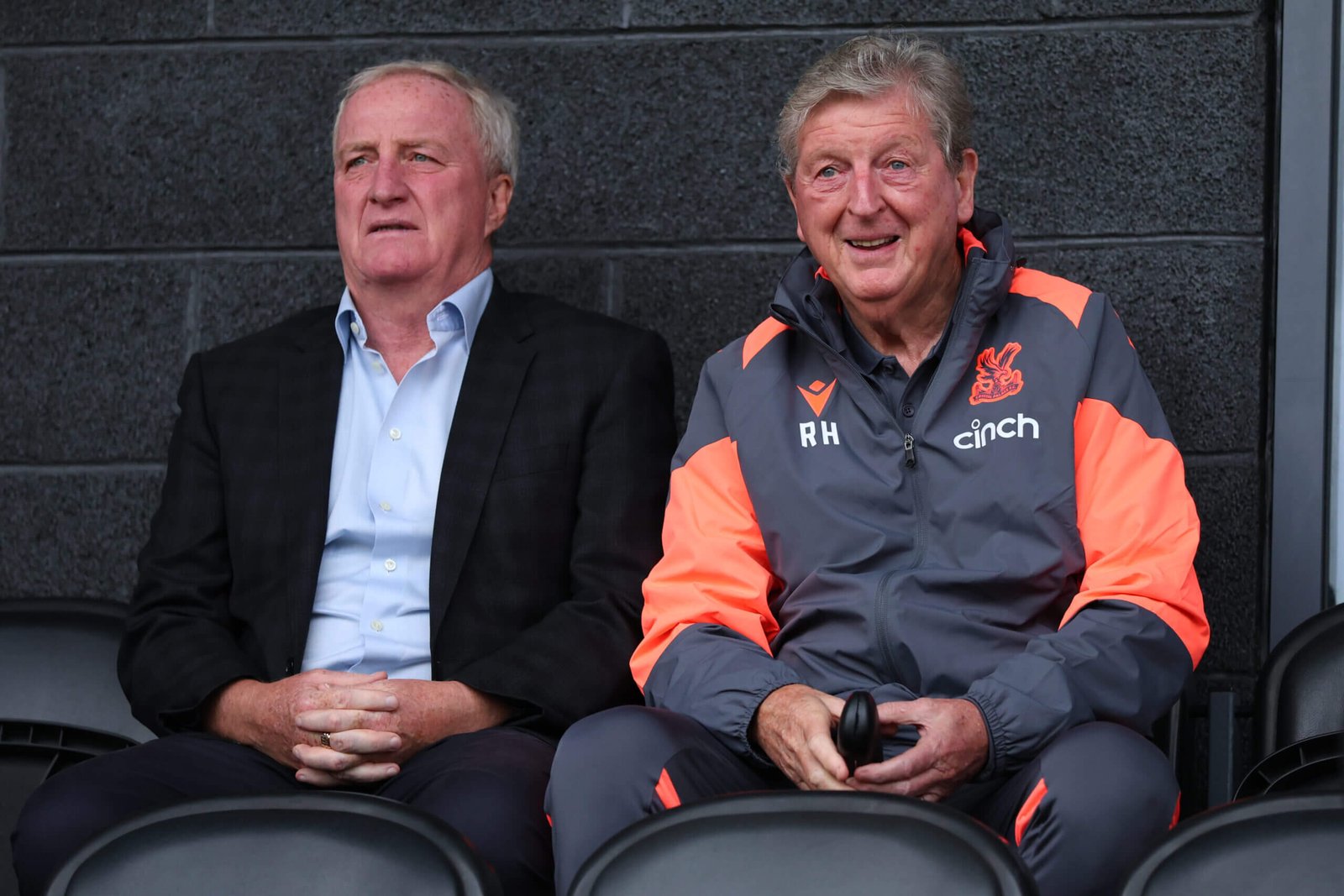
Roy Hodgson had a close bond with assistant Ray Lewington (Marc Atkins/Getty Images)
When Hodgson returned to the club at the end of last season, his relaxed style had been well received by players, who had felt ground down under Vieira. It was cited as one of the reasons for their upturn in form.
This season, however, that less rigorous approach has backfired.
In hindsight, Parish’s decision to hand Hodgson a one-year contract last July was probably a source of regret to all parties.
A short-term deal offered Hodgson no authority and risked undermining him from the start. It sent a message that this was simply a transition season.
The summer recruitment underlined that, with just one outfield player arriving for a significant fee – Matheus Franca, a 19-year-old from Brazil who has scarcely featured despite being front and centre in branding by the club’s marketing department. That lack of game time, too, has been a source of contention.
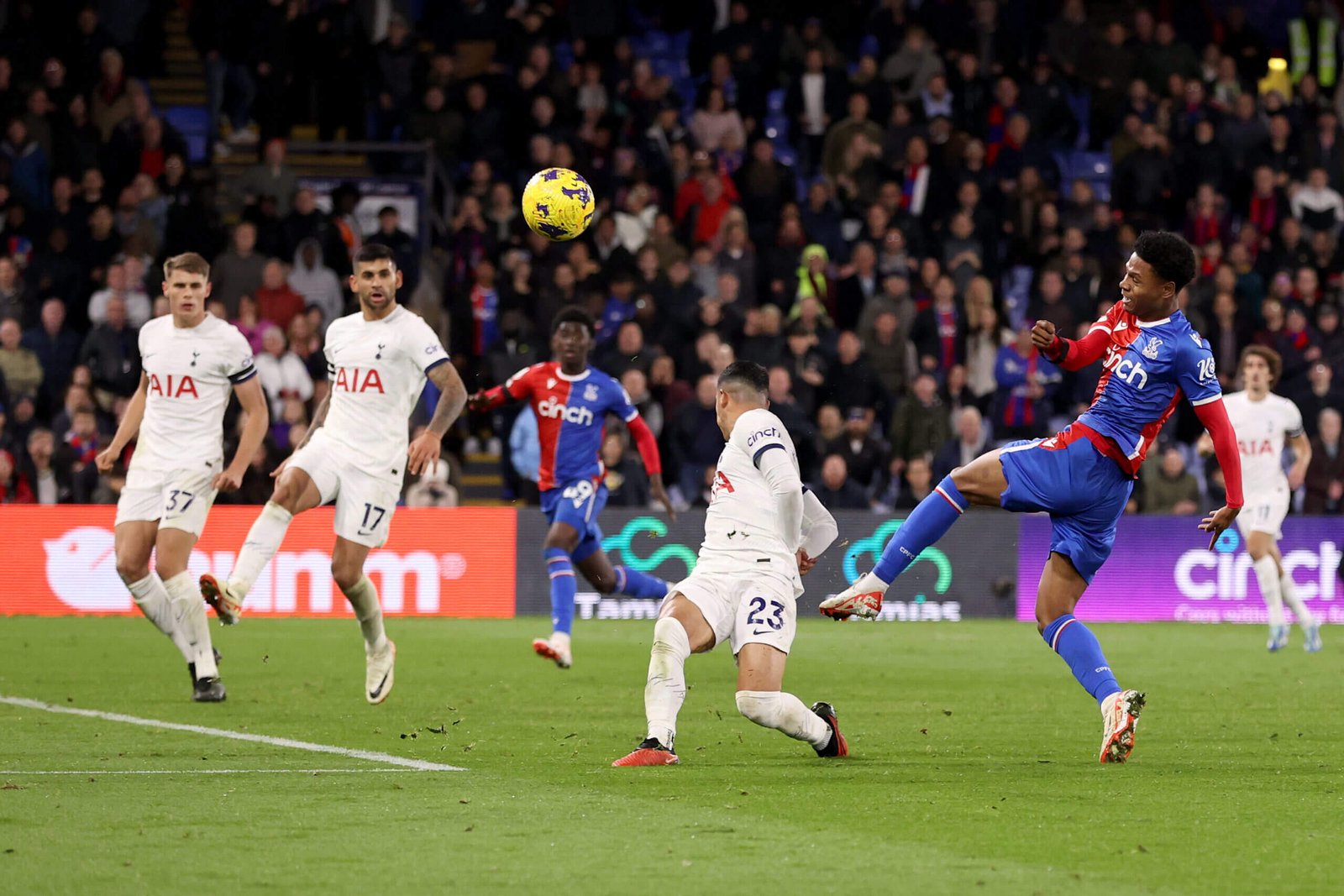
Matheus Franca has had few first-team opportunities (Ryan Pierse/Getty Images)
Publicly, Hodgson said he “did not regret being here”, but in private he must have questioned why he returned. Like Vieira before him, he had to work with a weaker squad than in the previous campaign.
Most significantly, there was no replacement for Wilfried Zaha, who left for Galatasaray in July. It meant Hodgson was missing a recognised senior left-winger and a key source of goals.
Palace seemed to be pinning their hopes on Zaha repeating his approach to previous transfer windows and flirting with departing before staying put. When he didn’t, panic seemed to set in: Franca’s arrival was pushed through, but he does not have an obvious best position, has limited senior experience and was being handled by a manager who has always prioritised experience over youth.
Even in the January transfer window, there were concerns over whether Hodgson would be prepared to use players brought in to fit the club’s vision to sign younger talent. They were the Premier League’s highest spenders, signing 19-year-old Adam Wharton from Blackburn in a deal which could be worth up to £22million and right-back Daniel Munoz from Genk, but there were no attacking reinforcements.
Hodgson was dealt a poor hand by his board, but he also chose not to play the cards he did have. Naouirou Ahamada, 21, David Ozoh, 18, Malcolm Ebiowei, 20, Rak-Sakyi, 21, and Franca, 19, were not involved beyond brief substitute appearances, which made assessing their true abilities difficult.
It was true that, for some, their performances in the under-21s and cameo appearances did not demand their inclusion on a more regular basis. Hodgson said he would only use players if they “made us stronger”: there was no evidence, in his view, that those young players would do that.
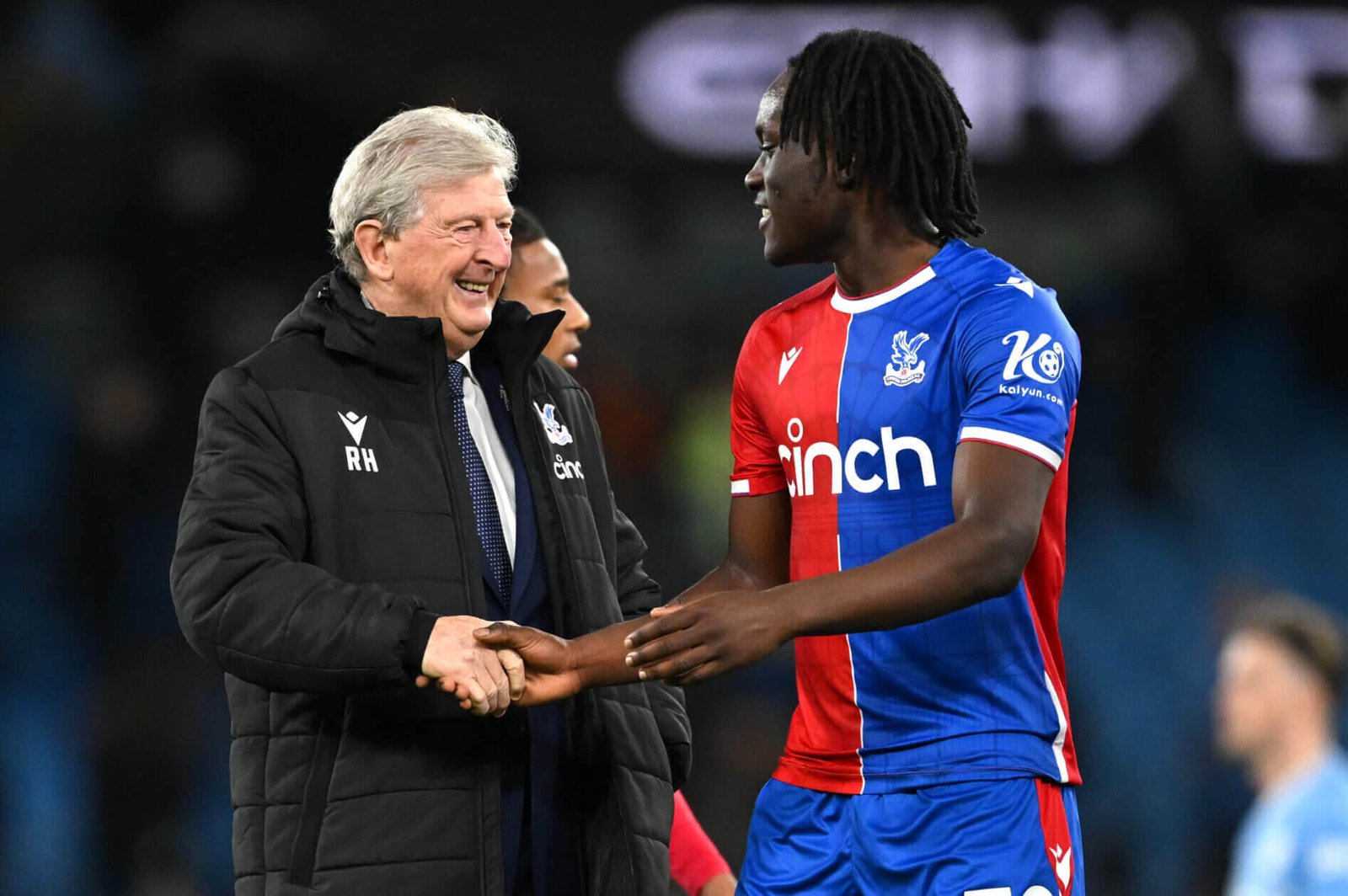
David Ozoh has started to break through this season (Michael Regan/Getty Images)
But the manager’s insistence on talking down the abilities of his youngsters also became a bone of contention for fans. After Palace’s 4-0 defeat against Newcastle United in which Franca and Rak-Sakyi had produced lively second-half cameos, Hodgson told reporters: “If you’re going to start writing how good they were in that 15, 20 minutes, I’d advise them not to start reading the newspaper.”
After Palace’s 2-1 defeat to Tottenham Hotspur, he said his side had become “much weaker” after Ahamada and Franca came on – a clumsy remark for which he subsequently apologised – while after the FA Cup third-round replay defeat at Everton, he indicated the youngsters would struggle to get chances in the Premier League despite having previously suggested fans should expect to see more of them.
Hodgson’s habit of ‘misspeaking’ became increasingly problematic. He issued three apologies this season: one for his remarks on the youngsters; again when he referred to a difference of opinion between Eze and Palace’s medics over his injury; and, most damaging of all, the suggestion that Palace fans had been “spoilt” after the Bournemouth defeat.
Hodgson has been more ready to speak his mind freely than in the past but his comments rarely proved helpful. While he often highlighted mistakes by young players, for example, no such criticism was levelled at senior players.
Some senior members of the Palace squad had begun to lose faith in Hodgson, but that feeling was not universally shared. This was, in part, a legacy of last season when he helped rebuild the group’s confidence. Gestures such as pushing back the start time of training to allow those with children to do the school run and spend time with family in the mornings, as well as making communal pre-match meals optional, were welcomed.
Initially, Eze – who had been on the periphery of Vieira’s squad – and Tyrick Mitchell enjoyed upsurges in form. The former spoke warmly of his working relationship with Hodgson in an interview with The Athletic in April, while in November, Jordan Ayew called him “exceptional”. The sentiment was genuine.
This season, however, has thrown up key differences to last. Senior players James McArthur and Luka Milivojevic, whose voices carried weight in the dressing room, have departed. Zaha, too, has been missed as someone whose strong mentality pushed team-mates on.
Joachim Andersen has become the squad’s unofficial spokesman, the Denmark international twice confronting angry fans in the wake of painful defeats (against Arsenal and Brighton). He has also been the one player prepared to hint at frustration with the club’s direction, highlighting after the home draw with Brighton that Palace do “have some creative players”, namechecking Franca among others.
Yet Andersen is not understood to be unhappy at Palace, neither was he agitating for Hodgson’s departure. While there have been strong opinions shared in the dressing room, that has been done to demand improvement. Team spirit has generally held up well.
Hodgson, meanwhile, was never the type to rant and rave. The management team did utter strong words at half-time at Brighton but the mood after the final whistle was subdued rather than furious.
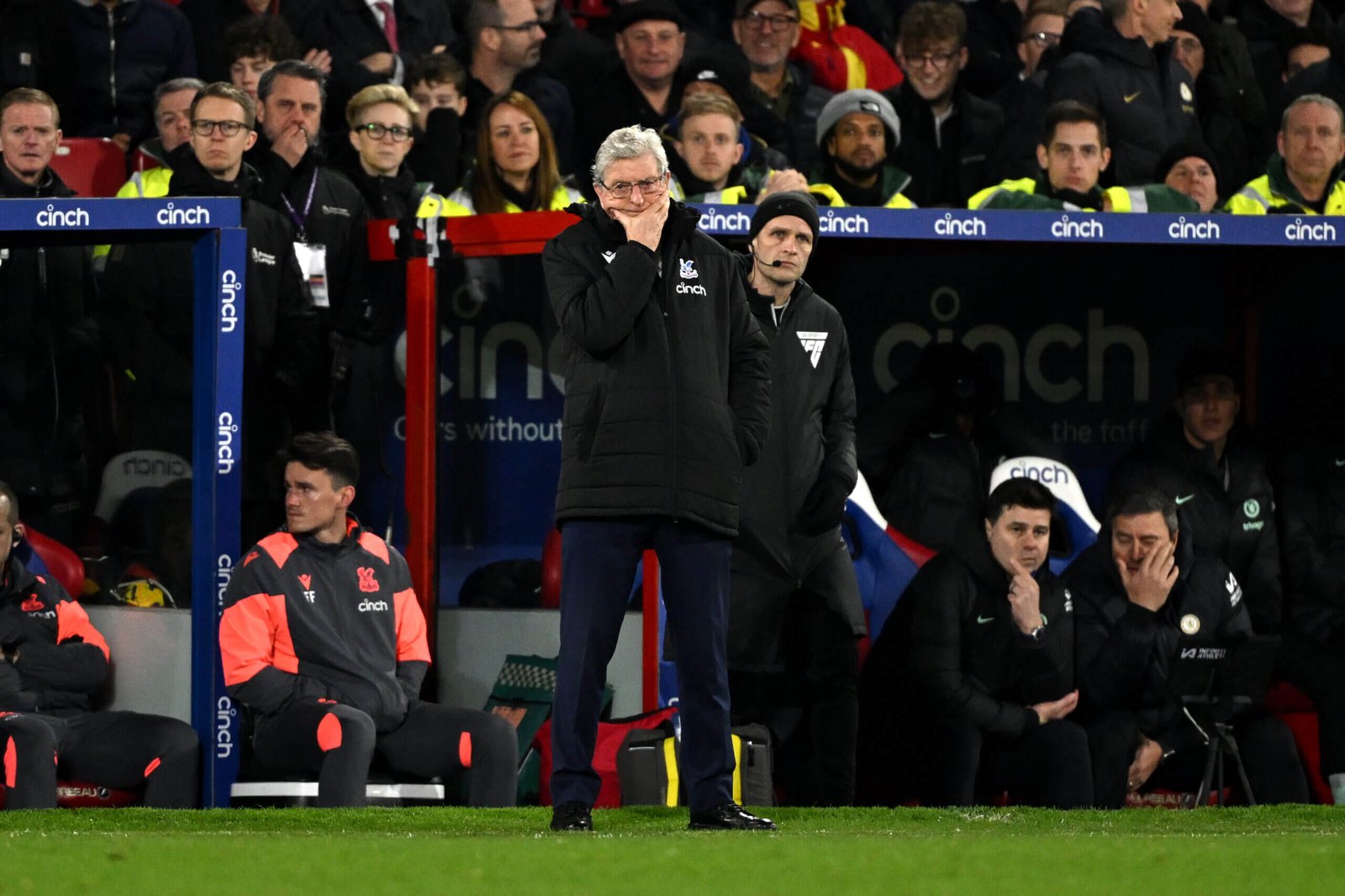
Roy Hodgson on the touchline against Chelsea in what proved to be his final game (Mike Hewitt/Getty Images)
Palace, like several other clubs, possibly believed this season would represent a ‘free hit’, based on the perceived weakness of the three promoted teams. Everton’s 10-point deduction only added to that feeling.
On that basis, major decisions like appointing a long-term manager or squad investment could be deferred until the summer, which was always likely to be one of upheaval given the likelihood that one or more of the club’s biggest assets will be sold.
But things have not turned out that way. Everton’s record is more akin to a mid-table club, while Luton have surpassed all expectations. The bottom of the table has become congested, although both Everton and Nottingham Forest could yet be hit by further points deductions.
Parish sacked Vieira not because he believed relegation was a certainty — he believed his side would stay up — but because, he said, Palace could not afford to take that risk.
Hodgson was granted some leniency, due to his attachment to the club, the success of last season, the fact that he is effectively the last available firefighter Palace can turn to and an acknowledgement that he had not been helped by those above him. But in the end, his fate was sealed because Palace were in dire form and only five points clear of the relegation zone.
It is a tacit acceptance that they were wrong to turn back to Hodgson in the summer. Not all the general partners were convinced that should have happened: Textor – who only spoke to Hodgson a handful of times in his two most recent spells at the club – was against it.
That is a reflection of wider divisions among the general partners, who have also been a target for supporter anger, but it is easier to dismiss the manager than any of the more significant decision-makers.
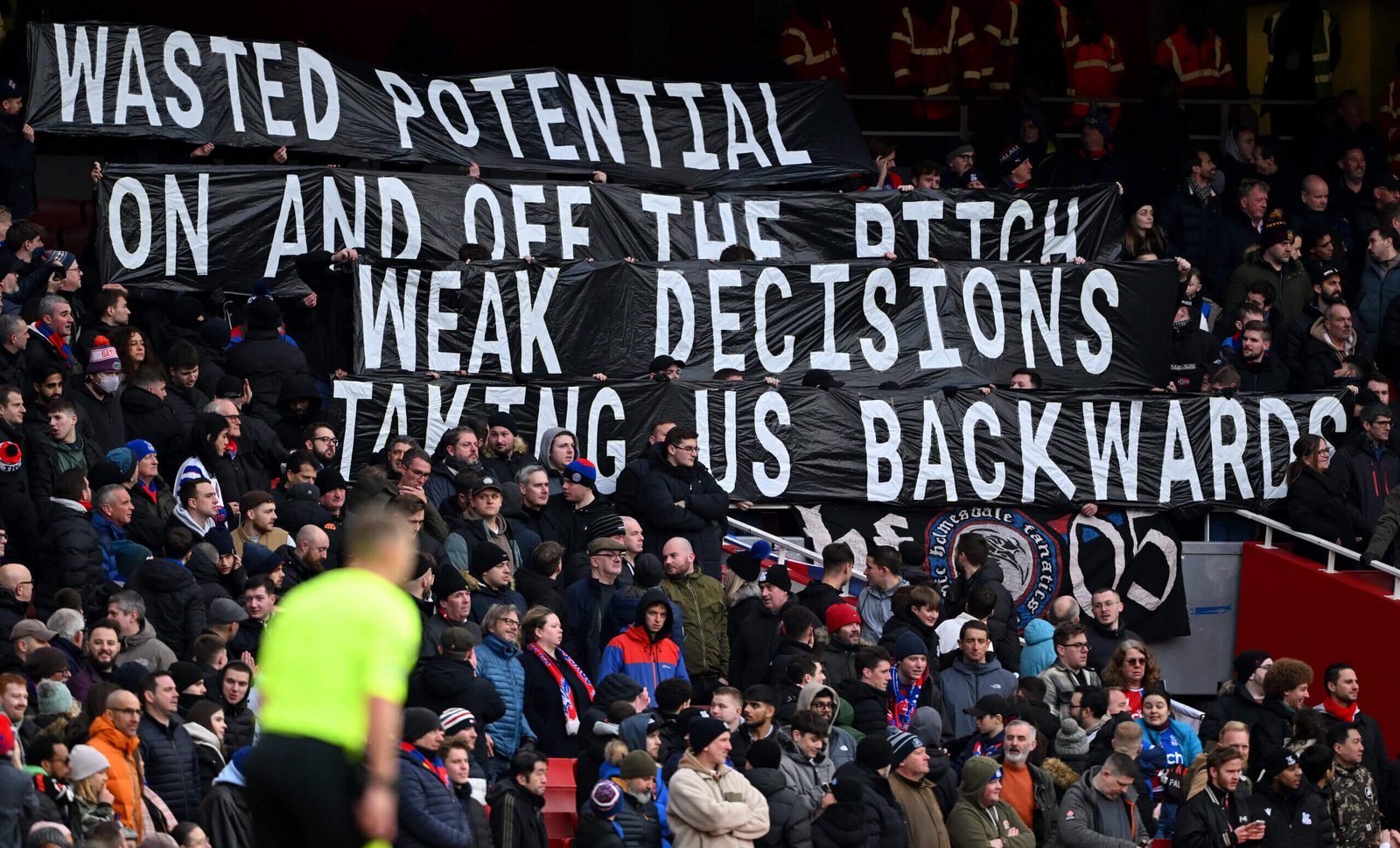
Palace fans make their point to the club’s board (Shaun Botterill/Getty Images)
Hodgson had been hinting in public that he perhaps regretted coming back. Before the Arsenal game in January, he said he would be “dishonest” if he claimed not have questioned his decision to return; before the Chelsea game last week, he conceded it had been “the toughest period of my career”, given “the fans have turned so much against us”.
Hodgson has more important things to focus on now as he seeks a full return to health, but it will frustrate him that he will not have the chance to see if he could have engineered a revival.
He has responsibility to bear but a muddled strategy from above made his job more difficult than it should have been. Palace became dysfunctional on and off the pitch.
When he left almost three years ago, the small contingent allowed into Selhurst Park serenaded him as a hero. He was granted a more rapturous ovation at the end of last season after a run of five wins in 10 games.
This time, there was no warm send-off from the fan-base. And that, perhaps, should be the biggest regret of all.
(Top photo: Ryan Pierse/Getty Images)
Read the full article here


